Table of contents
Meaning of Ashtanga Yoga

Ashtanga Yoga, or Ashtanga Vinyasa Yoga, is one of the yoga systems. It was introduced in the West by Sri K Pattabi Jois and means "Yoga of eight limbs", in Sanskrit. However, its practice was already mentioned in Patanjali's Yoga Sutras, which are believed to have been written between the 3rd and 2nd centuries B.C.
The name of this yoga system is given because the method seeks the purification of the body and mind through eight stages: Yama (self-discipline); Niyama (religious observance); Asana (posture); Pranayama (breath-holding); Pratyahara (abstraction from the senses); Dharana (concentration); Dhyana (meditation) and Samadhi (state of super-consciousness).
Ashtanga Yoga is a dynamic practice that brings numerous physical, emotional and spiritual benefits. To learn more about this practice, follow the article!
What is, aims and specifics of Ashtanga Yoga
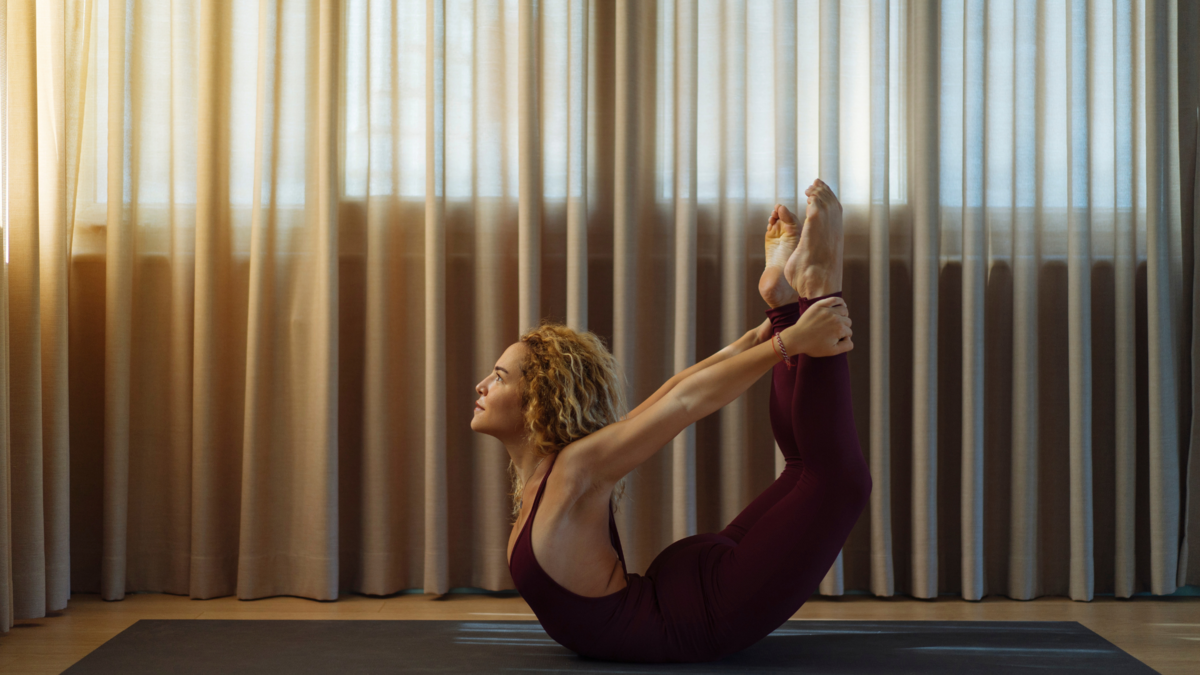
Ashtanga Yoga is characterized by a fluid and vigorous practice, with movements synchronized with the breath in a predetermined composition. The series of postures are taught by a teacher and, in addition, it also encompasses moral and ethical principles. Understand now what Ashtanga Yoga is and how to practice it.
What is Ashtanga Yoga
The word "Ashtanga" originates from Sanskrit, an ancient language of India, and means "eight limbs". This term was used for the first time by a very ancient Indian sage called Patanjali. He is responsible for having written the Yoga of the Sutras, describing in eight practices essential for us to master and achieve the transcendence of this world.
Therefore, Ashtanga Yoga boils down to the exercise of these eight essential Yoga practices which are these eight movements:
The aims of Ashtanga Yoga
Through movements synchronized with your breathing, you will do a progressive set of exercises taught in Ashtanga Yoga with the aim of detoxifying and purifying your body. Thus, you enable a conscious encounter with the inner rhythm of your being.
In addition, there are moral and ethical principles that should not be set aside. They refer to the commitments and responsibilities of good coexistence among beings. These practices arise for those who aim to attain enlightenment.
The specificities
There are several lines of yoga and each one has its own specificities. The practice of Ashtanga Yoga requires determination and discipline. After all, this is one of the most intense and challenging yoga practices.
It is necessary to repeat the series day after day until each posture is completely mastered. Only then can you move on to the next level. So, if you have the willpower and wish to have good physical conditioning, Ashtanga Yoga is for you.
Other lines you can relate to are Hatha Yoga, Iyengar Yoga, Kundalini Yoga, Yoga Bikram, Vinyasa Yoga, Restorative Yoga or even Babyoga.
Mysore Style
Mysore is the city in India where Ashtanga Yoga was born. The person responsible for creating this method is known as Pattabhi, and he founded his school the Ashtanga Yoga Research Institute after years of study with the best yoga gurus at the time. After the foundation, he shared his teachings which became popular throughout the west.
Initially, the practice of yoga was done only between the disciple and his master, being an isolated activity and little shared. However, with the emergence of Ashtanga Yoga the practice of meditation became popular and, in summary, it works as follows:
Structure of series 1 or First series
The first series of Ashtanga Yoga exercises is known as "Yoga Chikitsa", which means "yoga therapy". It aims to remove your physical locks that prevent you from having a healthy body.
In most cases, it is used to open the hips and stretch the ischiotibial muscles that lie behind the thigh. But, it is also said to have emotional and psychological effects, which will surely benefit your mental health.
The practice of the first series of Ashtanga Yoga boils down to:
All the movements should be worked in accordance with keeping your heart rate up and increasing the strength and intensity of the movements gradually, to warm up your body and detoxify your body.
Guided group classes
There are several yoga studios that allow you to experience Ashtanga Yoga in groups guided by a guru. In this class format, it will not be possible for you to learn all the movements, because the classes are usually mixed and this makes it impossible to apply the more advanced movements of the first series of Ashtanga Yoga.
This is the type of class where you will learn the most basic movements, or modified versions of the series so that all students can follow along together. Most likely you will learn less standing and sitting positions. For this, talk to your guru and he will help you.
How to do it safely and avoid injury
When practicing yoga, you must focus completely on the movements you are doing. Full attention on the positions and breathing are what create a connection between your body and mind and enable you to perform at your maximum in meditation.
To facilitate the practice of yoga, do it safely and avoid injuries will be necessary, in addition to attention, a warm-up. Especially if it is done in the first hour of the morning, warm up the muscles gradually so that you avoid any kind of injury, if you do a more advanced position. A good tip is to start with the series of sun salutation.
The benefits of Ashtanga Yoga
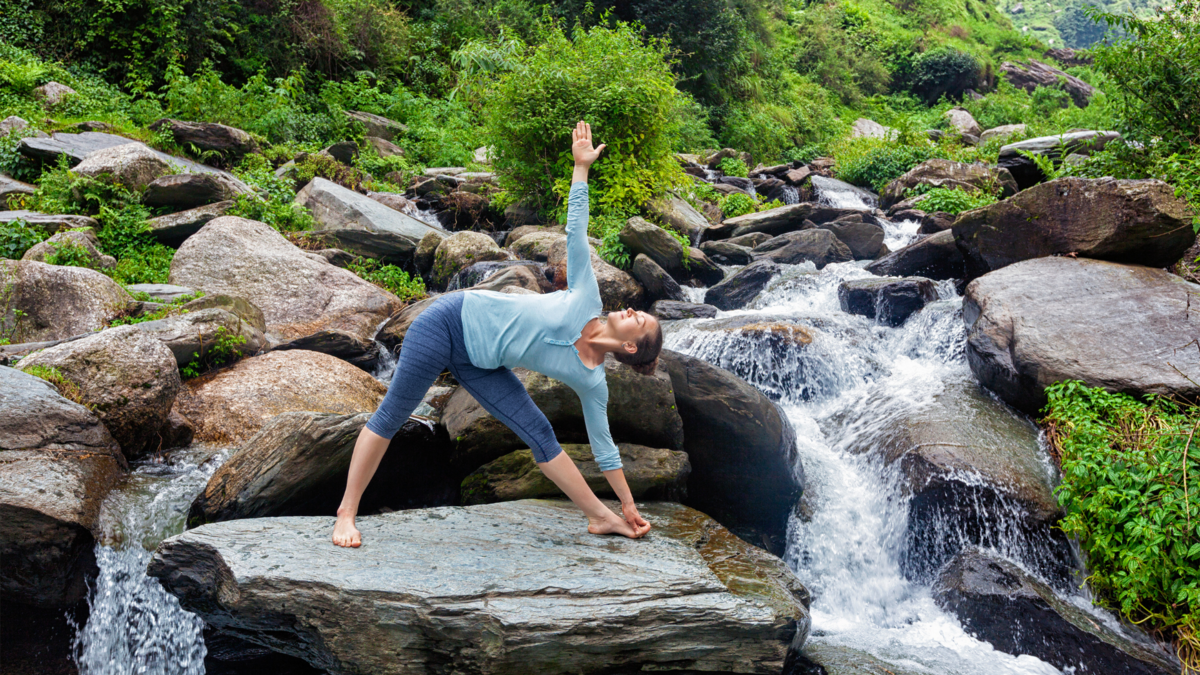
As we have seen, Yoga brings various benefits to all who practice it. From improvements to your physical body, to mental benefits, Ashtanga Yoga cultivates the self-knowledge necessary to balance your body. Discover now all the benefits of Ashtanga Yoga!
Physicists
The practice of Ashtanga Yoga is dynamic and demanding, all this is due to the exercises that aim to generate an intense internal heat that help in the detoxification of the body. Remembering that the series also contribute to strengthen and tone the muscles of your body. Among the physical benefits of Ashtanga Yoga are:
Mental
Meditation exercise offers amazing mental benefits that are the results of breathing and concentration exercise, pranayama and drishti. Among the benefits listed are:
Short-term benefits
The short term benefits of Ashtanga Yoga are directly related to the breathing exercises, concentration and physical positions. For those who are beginning the practice of meditation, as they reproduce the first series they will notice a gain in flexibility and a more controlled breathing.
Benefits of regular practice
Regular practice of Ashtanga Yoga will help keep your mind clearer and your body stronger and more flexible. Because the exercises generate internal heat, they intensify circulation enabling an improvement in oxygenation and detoxifying the body by releasing impurities through perspiration.
The primary series of Ashtanga Yoga is known as Yoga Chikitsa, which refers to therapy through yoga. It aims to correct the locks in your body and help you in your purification. There are the second series called Nadi Shodana (nerve cleansing) and the third series which is Sthira Bhaga (divine grace).
They work in a way to ensure total detoxification of the body, the elimination of blockages, as well as providing greater mental focus and emotional balance.
The three principles of Ashtanga Yoga
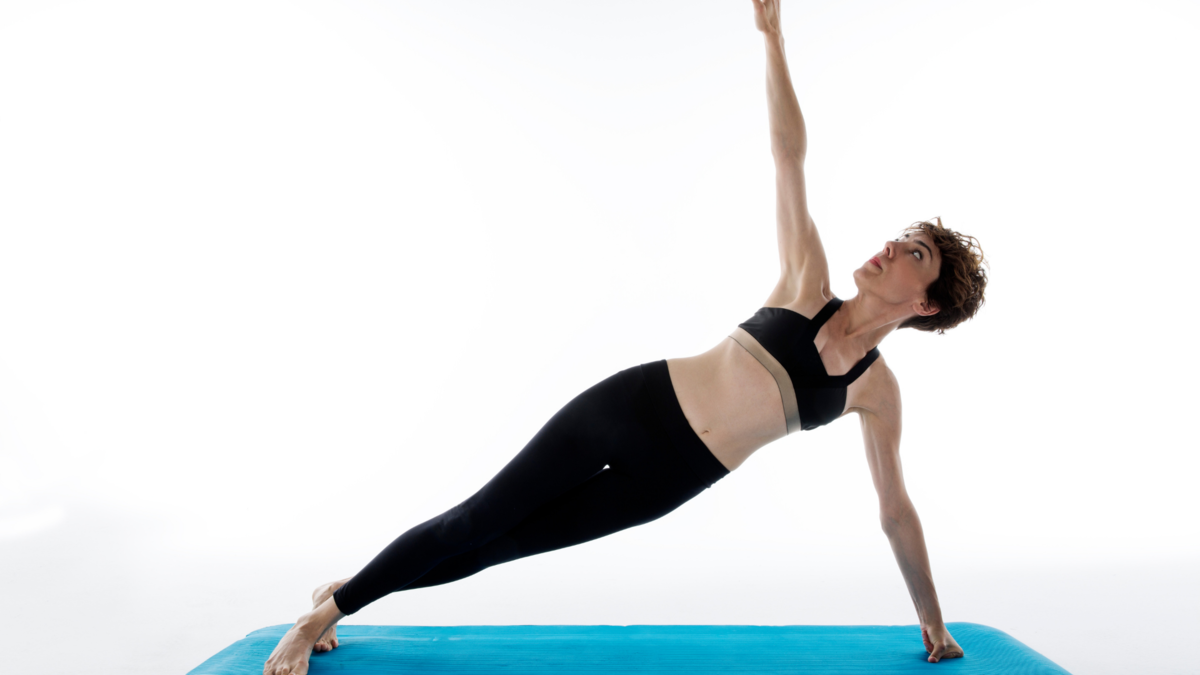
The principles of Ashtanga Yoga are embedded in the concept of Tristhana, which means: a posture, a drishti (point of attention) and a breathing system. These are the exercises that act in meditation and help practitioners to concentrate on their introspection. Learn the three principles of Ashtanga Yoga essential to the correct practice of meditation below.
Pranayama
The word Pranayama is a combination of prana, which means life and breath, and ayama, which is expansion. For ancient yoga, the combination of prana and yama is based on the expansion of energy between the body and the universe through conscious and refined breathing movements with the objective of building an internal and constant flow of the being.
This is the basis of Yoga practice designed to awaken your life force. In Ashtanga Yoga, the breathing method used is ujayi pranayama which is commonly known as "ocean breathing", which aims to increase physical heat and increase oxygen levels in the blood.
Asana
Contemplation or meditation in one position, commonly sitting, for long hours is known as Asana. In Indian tradition, the Asana is attributed to Shiva who taught it to Parvati, his wife. In Ashtanga Yoga there are several seated or standing postures through which through practice you will be able to flow your energy.
It is through the asanas that you activate the three primary bandhas of the body which are the spine, or the mula bandha, the pelvic region which is the uddiyana bandha and the region near the throat known as the jalandhara bandha.
Drishti
Drishti is a derivation of Dharana, or concentration, and is originally described as the eight limbs of yoga. Drishti means focused gaze and serves as a means to develop focused attention.
This is the practice where you fix your gaze on a point, serving as a way to develop full attention. This element of Tristhana is responsible in the practice for improving focus and self-awareness while you exercise breathing and movement, or Pranayama and Asana.
The Eight Limbs of Ashtanga Yoga
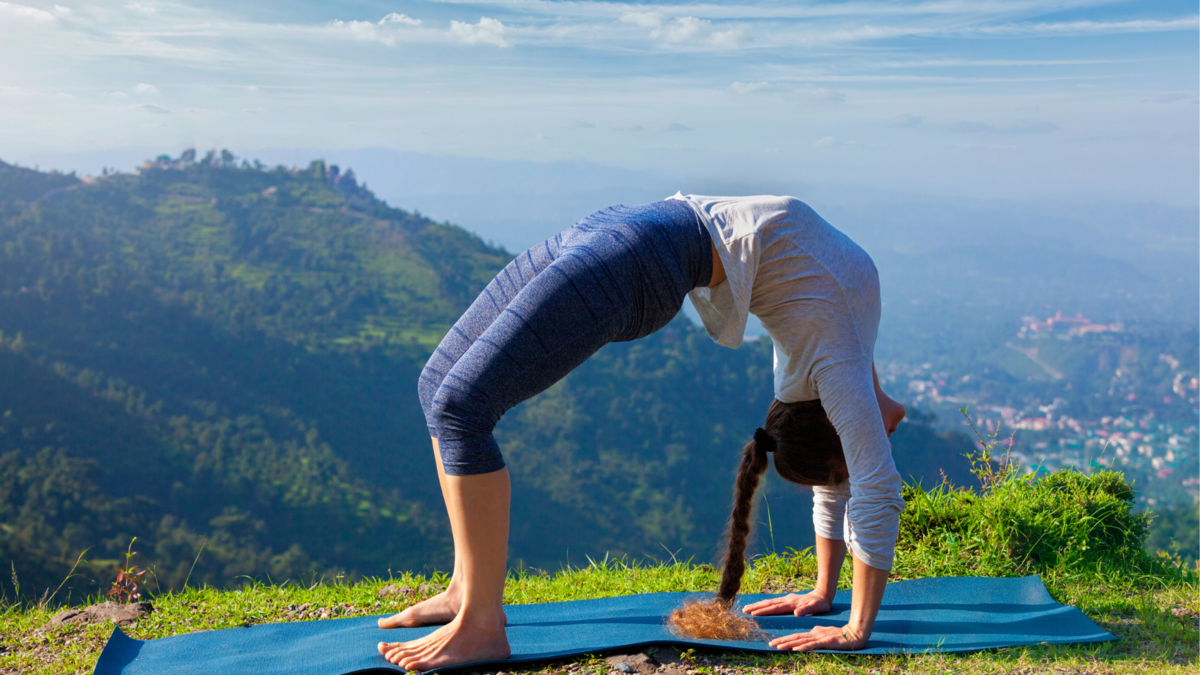
Ashtanga Yoga means, in Sanskrit, "Yoga of eight limbs". Thus, through eight steps the practitioner seeks to purify his body and mind, as well as attain self-realization. The eight limbs are:
- Yama;
Now understand each of these members and how to practice them!
Philosophy and principles
The word Ashtanga translated from Sanskrit means "eight limbs", therefore Ashtanga Yoga refers to the eight limbs of yoga. According to its founder, Pattabhi, the daily practice of meditation is necessary to enable a strong body and a balanced mind.
This is why Ashtanga Yoga is so dynamic and intense. It is composed of six series ranging from primary, intermediate to advanced and each one has a fixed sequence of poses. The student should learn gradually and under the guidance of his teacher.
The main point of the practice of meditation is the breath, being done in a deep and audible way to help concentration and keep the attention fixed. For those who go deeper into the philosophy of Ashtanga Yoga, there are also the moral and ethical principles, yama and niyama, which allow a balanced and healthy life from the internal level of being to the external one.
Yama - Moral or ethical codes and disciplines
Yama represents control or mastery over the body. The five main moral codes of this concept are:
- Ahimsa, the principle of non-violence.
These principles serve as a form of control of the natural impulses of every human being which act through the five organs of action called Karmendriyas. These organs are: the arms, legs, mouth, sexual organs and excretory organs.
Niyama - Self-observation
Niyama appears as an extension of the yamas, expanding its principles from the mind to the environment. These principles were created with the objective of good behavior in the collective. In this way, you will work your mind, body and spirit to cultivate a positive environment and good coexistence, thus enabling your internal and external growth.
The five disciplines prescribed by Niyama are:
- Saucan, or purification;
Asana - Postures
Asanas serve as a gateway for those beginning the practice of yoga. The different postures and demands that each posture has on our bodies have attracted the western world by the beauty and strength that the practice of asanas illustrates.
There are currently 84 records of asana positions described in the Buddhist scriptures. And each position has its own uniqueness, but among so many positions, there are some classes that divide asanas into three groups, which are: the postures, the meditative and the cultural and relaxation ones.
Although Asana means stable and comfortable posture, some are difficult to achieve, so you need to repeat the series daily to do them comfortably over time. Allow yourself a healthy incorporation of asanas into your routine and you will realize how positive this practice will become for your life.
Pranayama - Breath control
Pranayama basically means the expansion of breathing. In Yoga, breathing is one of the essences of life, it is believed that by prolonging the breath we are able to prolong life. Prana represents the vital energy, while Yama represents the path. Therefore, the breathing exercises are represented by Pranayama.
The breathing exercise is essential to exercise concentration and allowing the detoxification of your body, because by prolonging your breathing you enable an improvement in respiratory flow allowing better circulation and distribution of oxygen in your body. In Pranayama, there are three fundamental movements: inspiration, exhalation and retention.
Each type of yoga requires a type of breathing in Ashtanga Yoga. Ujjayi, also known as the breath of victory, is usually used. Through this technique, you will be able to calm your mind and relax your body to reach the next level in your meditation.
Pratyahara - Control and withdrawal of the senses
Pratyahara is the fifth step of Ashtanga Yoga. This is the step responsible for connecting your self to the external world through control of your body and abstraction from the senses. In Sanskrit, Prati means against, or outside. While Ahara means food, or something you can put in.
The secret of Pratyahara lies in the attempt to control external influences by retracting the senses and avoiding any kind of physical distraction in meditation. In yoga, it is believed that the senses are capable of taking us away from our essence and therefore we often give in to the pleasures and desires of the senses suppressing who we truly are.
Pratyahara practice is divided into 4 forms which are:
Dharana - Concentration
Dharana means concentration and this is one of the fundamental prerequisites for the practice of meditation. Through the exercises of directing the mind, you will be able to discipline the mind, which will allow an improvement in your concentration and a better direction in your attention.
The idea of Dharana lies in your ability to forget the world around you and focus all your energy on a single point. Usually, these exercises are directly related to the attention to the breath or to a specific goal seeking to eliminate as much as possible any distractions that assault your mind.
Dhyana - Meditation
Dhyana on the other hand refers to contemplation, the practice of continuous focus will allow you to prolong your concentration and eliminate physical distractions. It is often compared to the flow of a river, which flows without interference.
It is very common to reach this stage in meditation in the practice of Asanas, when you can connect the breath, the posture and your attention into one movement.
Samadhi - Fully integrated supreme consciousness
Samadhi is the last stage of meditation, also known as the state of supreme consciousness of being. In this stage, you will be fully integrated into the universe, this is the moment where the physical and spiritual world become one.
Samadhi is not recognized as a stage, but rather as a manifestation of the previous stages. It is not done, it is something that happens.
The myths about Ashtanga Yoga

Ashtanga Yoga has become a very popular activity in the West. Amidst the many challenges brought by modern life, many people seek in the oriental techniques the solution to their physical and mental problems. However, with this wide dissemination, many myths have been created. Now, we will bring the truth about the most common myths about Ashtanga Yoga.
It's very difficult
Many people believe that Ashtanga Yoga is too difficult compared to other types of yoga. However, it should be said that no line of yoga is easier or more difficult than the other. They are just different, with their own specificities and different goals.
Ashtanga Yoga is more intense than some other types of yoga, as well as less intense than other lines, such as Bikram Yoga, so it is up to you to understand each line and practice the one that best suits you and your goals.
Only young people can practice
Another mistaken belief that many cultivate is that Ashtanga Yoga is only for young people. Everyone can enjoy the benefits of this type of yoga and, with proper guidance, succeed in all eight limbs of Ashtanga Yoga.
You need to be physically fit to practice
Being in good physical condition can facilitate the practice of Ashtanga Yoga, but it is not a prerequisite. Ashtanga Yoga seeks, through a gradual and evolving practice, to achieve balance not only in the body, but also in the mind. Therefore, being physically fit is not a determining factor for beginning this practice.
No weight loss
Although weight loss is not the main goal of Ashtanga Yoga, it may end up being one of the consequences of its practice. After all, you will be performing a daily physical activity. In addition, Ashtanga Yoga stimulates self-knowledge and allows you to control anxieties and compulsions, which can lead to healthy weight loss.
However, if your main goal is to lose weight, it is recommended that you seek the help of a nutritionist so that you can direct your diet to this end.
Tips for Ashtanga Yoga practice
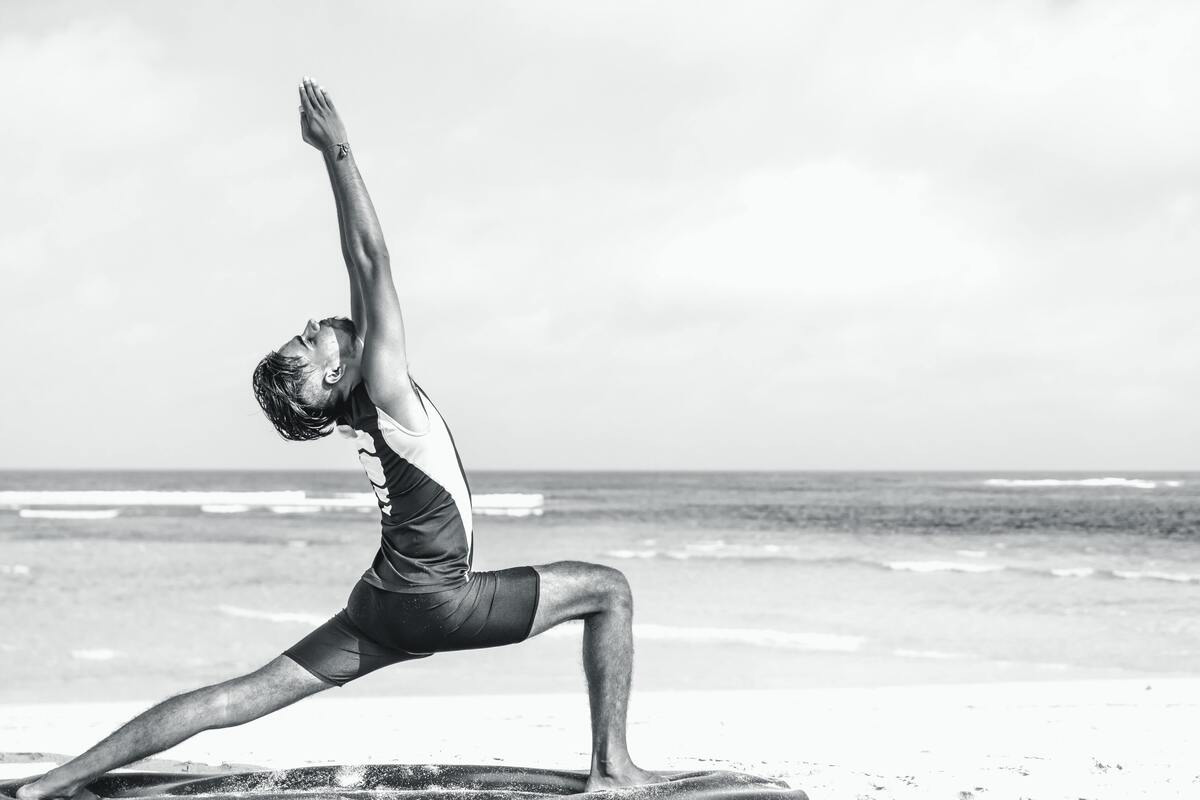
Many doubts arise when people begin to be interested in the practice of Ashtanga Yoga. Because it is part of a culture different from the Western one and involves elements both physical, mental, moral and ethical, it can awaken some uncertainties. Therefore, we now bring some tips to facilitate your beginning in this wonderful practice!
Go at your own pace
The most important tip is to respect your body and mind. Ashtanga Yoga is a challenging practice, and for sure you will want to perform all the Asanas and become a master of meditation. However, taking it easy and respecting your pace is essential to achieve these accomplishments in a healthy way. Don't try to run over each step.
Practice
The constant practice is essential for the evolution of Ashtanga Yoga. It is necessary to perform every day the sequences of positions so that you can progress. Another important tip about the practice is that it must be accompanied by a professional. Whether an online or face-to-face class, it is essential that you have someone to guide the correct way to do each position.
Don't compare your progress
The last tip, but not less important, is not to compare your progress with anyone else's. If you take classes in groups, you may end up comparing your progress with the other participants. But, know that this only gets in the way. Everyone has their own difficulties and facilities, and always keep in mind that Ashtanga Yoga is not only a physical activity. So, don't force yourself toto be the best in the practice of Asanas.
Are there differences between Vinyasa and Ashtanga Yoga?

Yes, there are differences between Ashtanga Yoga and Vinyasa Yoga. The main one is that Ashtanga has fixed series of positions, where each one needs to be completed before moving on to the next. In Vinyasa, there are no fixed series, and the teacher creates each sequence to suit each student.
Due to the non-ordering of the positions in Vinyasa Yoga, it is not recommended for beginners. Because, the meditation is coordinated in a more dynamic way and by exploring several postures in a single practice this may harm your meditation.
This is one of the advantages of practicing Ashtanga Yoga, because the student tends to enter into a meditative state more easily since he or she will know what must be done.

